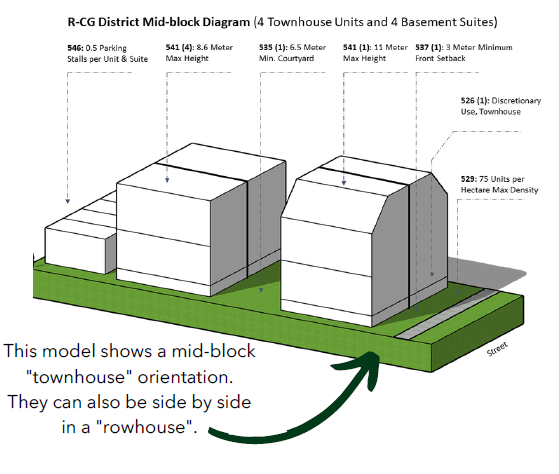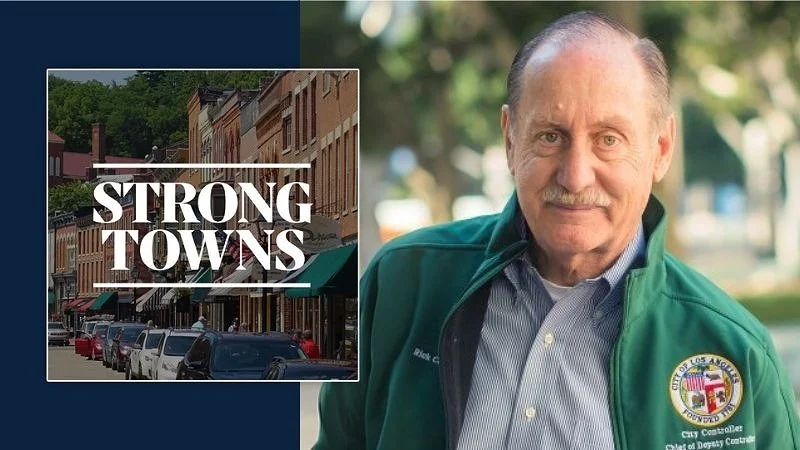This Canadian City is Taking a Hard Look at its Finances
Photo of Calgary by patrick mcvey on Unsplash
Transparent local accounting isn’t just about having your finances visible. It’s about understanding your vulnerabilities and frankly, your city’s spending habits.
For two decades, Calgary, the largest city in Alberta, Canada, has diligently produced an Infrastructure Status Report. “This is a good report, but it rarely bears good news,” says Hazen “Bis” Ellwood, who nominated the city to the 2025 Strongest Town Contest. The report’s findings are consistent: infrastructure obligations are rising, but the city’s ability to fund them has not kept pace.
Yet despite these clear warnings, Calgary continues to greenlight major projects without directly addressing its infrastructure shortfall. Over $1.7 billion has been committed to ventures like the BMO Centre Expansion ($500 million), the Arts Commons & Olympic Plaza Revitalization ($660 million), and a new arena complex in Victoria Park.
The arena project alone involves $853 million in public funding—nearly three times what was approved by the previous council in 2019—while the Calgary Flames are contributing just $40 million upfront. Although the team will repay $316 million through lease payments, the city won’t recoup the full amount until around 2060. City officials have stated that the deal won’t raise taxes or increase municipal debt, but University of Calgary economist Trevor Tombe calls that characterization misleading: “It makes it sound as though it’s a free lunch, which is definitely not the case.”
While these projects offer potential cultural and economic benefits, they also raise serious questions about how public dollars are being prioritized.
“It's fantastic that all of these investments are publicly available,” Bis adds. “Though there’s clearly work to be done to actually spend within our means, refocus our investments toward fiscal sustainability, and implement real solutions to our looming insolvency crisis."
Calgary’s recent megaprojects have another thing in common: they’re all in or near the greater downtown. Some suspect that the city is attempting to use public investment to spur private development in older areas. If these big bets succeed in drawing lasting private investment, they could improve the city’s private-to-public investment ratio. But that outcome is far from guaranteed. And there’s a lot to lose if they don’t.
Between 2004 and 2020, the replacement cost of all Calgary-owned infrastructure soared from $23 million to $93.9 million. Adjusted for inflation, that means the cost per resident to replace the city’s infrastructure has more than doubled, from approximately $33,000 per person in 2020 dollars to $70,000 per person. Whether this constitutes an unsustainable pace is open to debate. Some city leaders might argue the solution is to simply accept a lower level of service. But for many Calgarians, the underlying concern remains: the infrastructure is aging, the costs are rising, and the balance sheet is getting harder to justify.
Perhaps most troubling is the $7.7 billion gap reported in 2020 between needed infrastructure maintenance and available funding over the next decade. While the forthcoming 2025 Infrastructure Status Report may revise that figure, few expect a reversal of the trend. Nevertheless, Bis remains hopeful.
A chance to do things differently
One reason for optimism is Calgary’s growing population. The city has doubled in size over the past 30–35 years. Even just between 2021 and 2024, the number of people living within city limits grew from 1,306,780 to 1,491,000. This rapid growth presents an opportunity: to shift toward a more responsive planning system.
An illustration of configurations made possible through the city’s zoning reform. Courtesy of the City of Calgary’s R-CG fact sheet.
In 2024, Calgary took a meaningful step in that direction by legalizing duplexes citywide and making rowhouses a discretionary use. While duplexes (even with basement suites) may not represent a large enough increment to meet the city’s needs, these moves open the door for more flexible, infill-friendly development patterns.
More flexible land use rules don’t just make room for new residents—they’d benefit Calgarians who are currently locked out of housing opportunities. That includes those who can’t afford to compete for the limited number of available homes, or who feel stuck in homes or relationships that no longer serve them because of the high cost of moving. When land use rules adapt, people can form households that match their needs—and cities become more equitable, resilient, and dynamic.
An example of attached rowhouses, courtesy of the City of Calgary.
These recent reforms reflect a promising shift—away from top-down, high-risk investments and toward a development pattern grounded in long-term value and bottom-up investment.
Financial resilience isn’t about abandoning ambition; it’s about aligning investments with the real needs of residents and the true costs of maintaining a city. It doesn’t mean playing it safe; it means aligning spending with what actually makes places stronger over time. Calgary is already demonstrating leadership through transparency. The opportunity now is to let that information shape decisions that serve the city’s long-term stability.
That’s where the Strong Towns Finance Decoder comes in. This free, easy-to-use tool helps uncover where value is being created—and where resources are being drained. It equips both residents and decision-makers to ask sharper questions, recognize patterns, and push for investments that grow value over time.
Calgary has the momentum. It has the data. Most importantly, it has the chance to lean into a model of city-building that works—not just today, but for decades to come.









Asia (pronounced “ah-sha”) Mieleszko serves as a Staff Writer for Strong Towns. A dilettante urbanist since adolescence, she's excited to convert a lifetime of ad-hoc volunteerism into a career. Her unconventional background includes directing a Ukrainian folk choir, pioneering synaesthetic performances, photographing festivals, designing websites, teaching, and ghostwriting. She can be found wherever Wi-Fi is reliable, typically along Amtrak's Northeast Corridor.